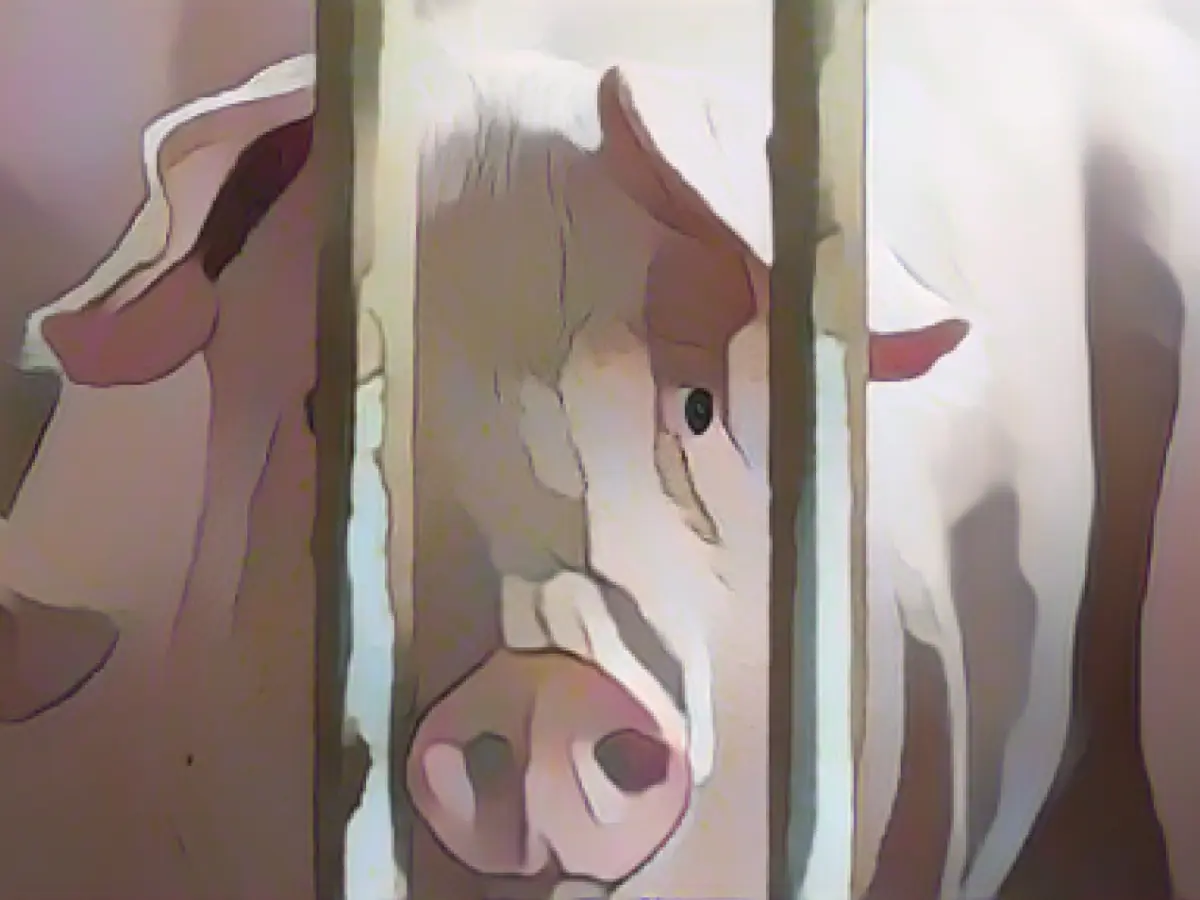Statistics - Fewer pigs and cattle in the southwest
Pig farming in Baden-Württemberg continues to decline: at the beginning of November this year, 1.26 million pigs were counted in the state, according to the State Statistical Office in Stuttgart on Thursday. This corresponds to a decline of four percent compared to the same period last year. A further decrease was also recorded in the number of pig farms. Compared to the previous year, the number fell by 8 percent to 1,510 farms.
According to the statisticians, the number of farms keeping breeding sows fell by five percent to 620. However, the number of animals was more stable and only fell by one percent to 101,500 sows.
According to the data, there are also fewer cattle and corresponding locations in the southwest. At the beginning of November, 14,481 locations with cattle were counted, two percent fewer than in the same period last year. The number of cattle fell by one percent to currently 905,656 animals. There were also fewer dairy cow holdings: Compared to 2022, there were almost 200 fewer holdings at 5279. The number of dairy cows fell by 5,648 and thus by two percent to 309,148 animals.
With regard to the decline in livestock numbers, the Ministry of Agriculture referred to the structural change in agriculture. Small farms in particular are giving up livestock farming - mostly as part of generational change. "As a result, farms are becoming fewer, but those that remain are often larger with larger numbers of animals per farm." The structural change is influenced by various factors, such as family circumstances, economic conditions or new legal requirements.
In contrast, the number of sheep rose to 211,600 animals, four percent more than in the previous year. While the number of ewes increased by three percent to 149,000 animals, the number of lambs and young sheep grew by six percent to 55,100 animals.
Press release
Read also:
- A clan member is punished here
- Traffic lawyer warns: Don't talk to the police!
- Will he be convicted as Jutta's murderer after 37 years?
- He also wanted to kill his cousin
- Despite the decline in pig farming in Baden-Württemberg, the number of breeding sows and their animals remained relatively stable, with a decrease of only one percent.
- The Southwest region, known for its agrarian traditions, has seen a reduction in both the number of cattle farms and locations with cattle, with a decline of two percent and one percent respectively.
- The Ministry of Agriculture in Stuttgart attributes the decrease in livestock numbers to the structural change in agriculture, particularly affecting small farms undergoing generational transitions, where larger farms with more animals are emerging.
- Apart from the decline in pig and cattle numbers, there was an increase in the population of sheep in Baden-Württemberg, with a four percent rise in the number of sheep, including a three percent growth in the number of ewes and a six percent increase in lambs.
Source: www.stern.de








